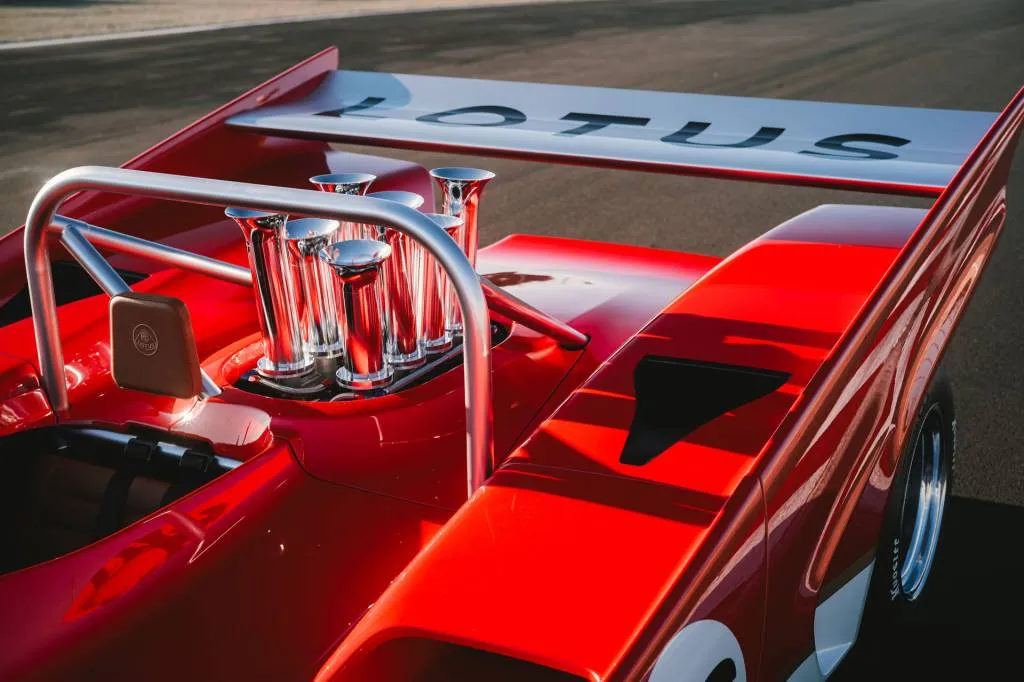Lotus surprised attendees of this month's 2023 Monterey Car Week in California with the reveal of the Type 66, a limited-edition track car based on a race car that Lotus designed in the late 1960s but never got around to building.
The original plan for the Type 66 was to enter it in the 1970 Can-Am Series. Lotus founder Colin Chapman wanted to see how his company's lightweight ethos would fare in Can-Am. A focus on Formula 1 meant Chapman never got his wish, despite Lotus' lead draftsman at the time, Geoff Ferris, having completed much of the design of the Type 66.
To help celebrate Lotus' 75th anniversary this year, the company has now announced plans to put the Type 66 into production. Just 10 examples will be built, as a nod to the number of races the car would have competed in during the 1970 Can-Am season, and each will be priced from more than 1 million British pounds (approximately $1.27 million).
To develop the car, Lotus relied on original drawings, some of which were in the possession of Clive Chapman, Colin Chapman's son and the current director of Lotus' classic car department. Using these drawings, Lotus was able to create computer-generated 3D images to help finalize the design.

Lotus Type 66
Some changes were made, mostly to meet modern safety standards. For example, Lotus added an inboard fuel cell, a sequential transmission with anti-stall, a carbon-fiber body, and a reinforced driver compartment.
Performance aspects were enhanced too, particularly when it comes to the aerodynamics of the underbody. Using modern computational fluid dynamics, Lotus managed to create a design that generates more than 1,763 pounds of downforce at 150 mph.
“While the visual expression is strikingly similar to what could have been—including the period-correct white, red, and gold graphics—the technology and mechanical underpinnings of the Lotus Type 66 represent the very best in today’s advanced racing performance,” Simon Lane, who headed the project, said in a statement.
According to Lotus, simulator testing has shown the Type 66 will likely match the performance of a modern GT3 race car.

Lotus Type 66
The chassis consists of extruded aluminum, bonded joints, and aluminum honeycomb panels, which is similar to what Lotus was using in 1970. A fixed roll cage was added for safety.
One of the real highlights of the design is a pushrod V-8 engine that Lotus developed purely for the project. The mid-mounted engine, complete with forged aluminum internals and trumpet-style air intakes, is claimed to deliver 830 hp at 8,800 rpm. The intakes, which were a common site during the Can-Am days, create laminar flow while also increasing volumetric efficiency, helping to improve combustion and in turn boost power.
Lotus hasn't said when deliveries will start.






